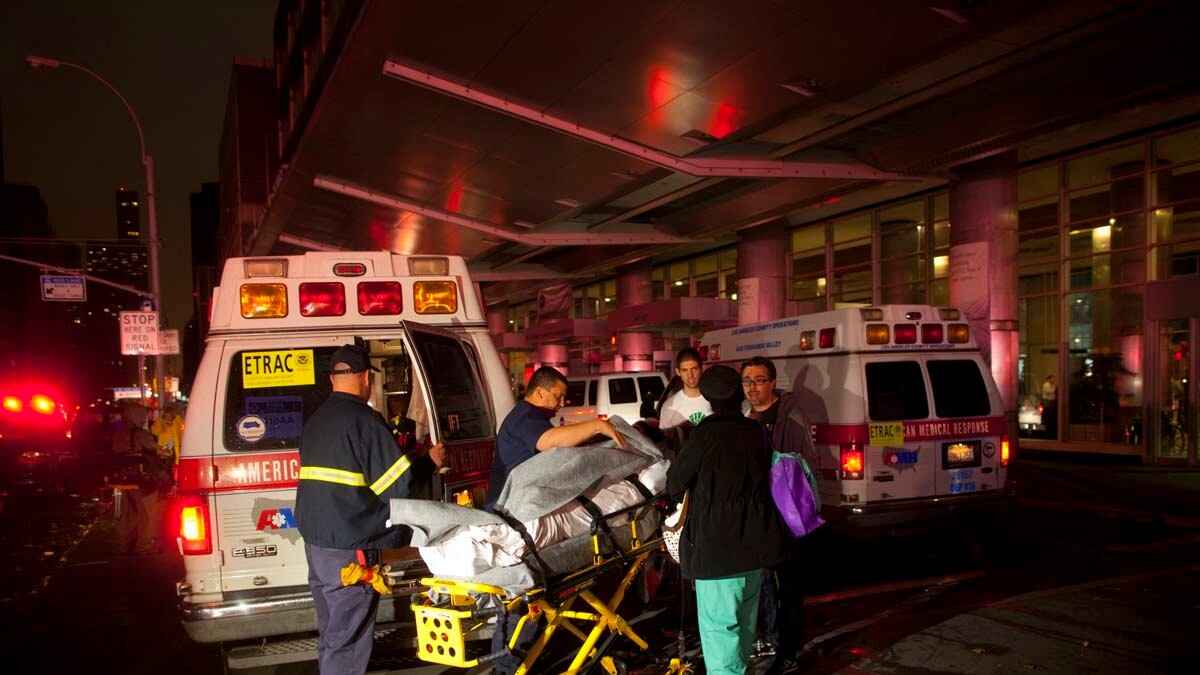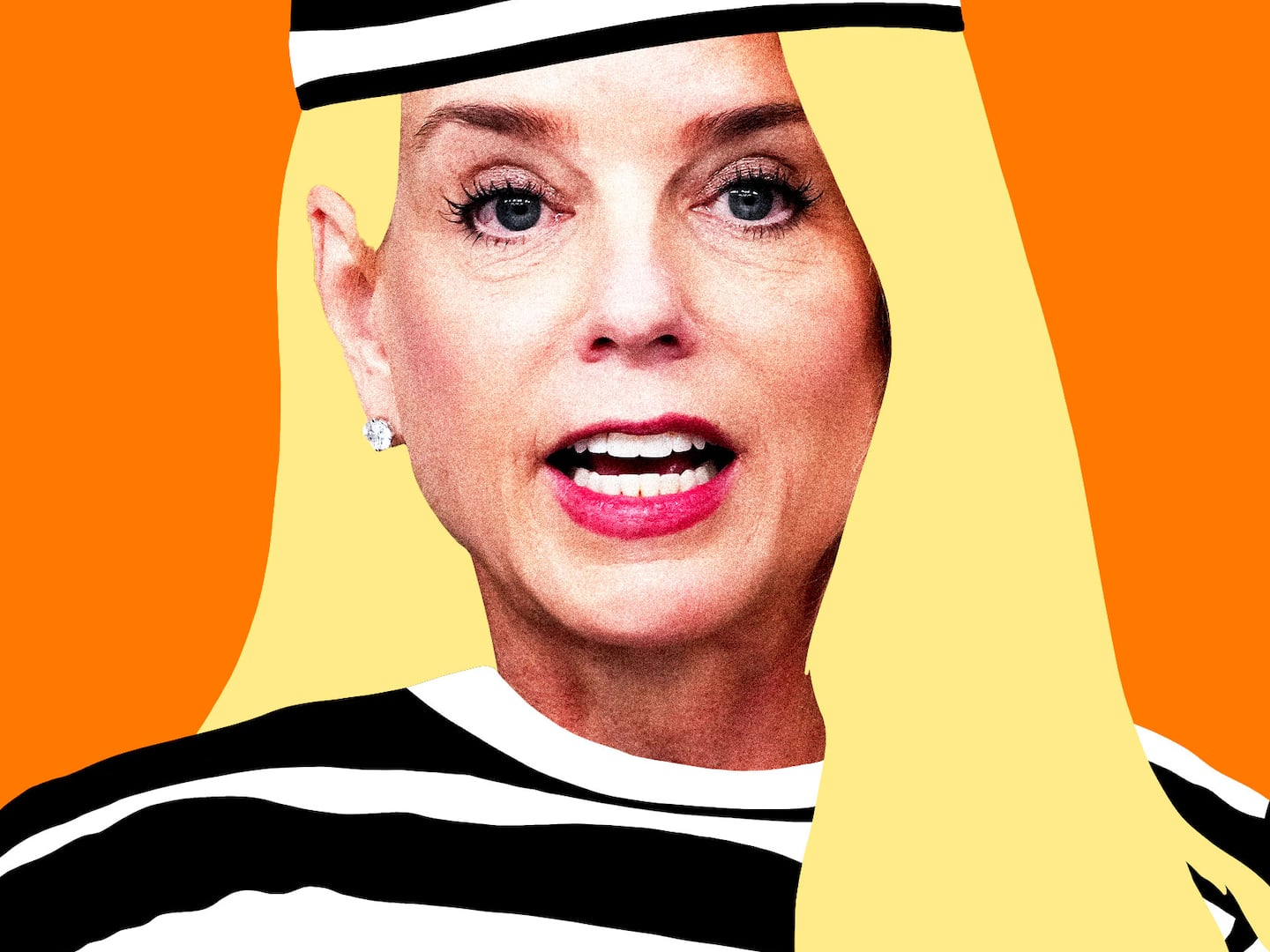Weaving through the jungle of wailing ambulances on 1st Avenue was a bright-eyed young dad, light-blue bassinet in tow. Amid worried NYPD, paramedics, nurses, and doctors, he glowed. As the new dad rushed by the guards to make it inside, onlookers offered encouragement. "Wow, heck of a day to have a baby!" one man yelled. "Actually, I'm lucky," the new father shouted back, "bringing him home."
Lucky, indeed. When Hurricane Sandy tore into New York City on Monday night, NYU's Tisch Hospital faced the worst-case scenario: the basement flooded and the backup generators failed.
Two hundred people—including more than 20 newborns—were forced to evacuate. Firefighters carried some of the babies down nine flights of stairs. "Due to the severity of Hurricane Sandy and the higher-than-expected storm surge, we are in the process of transferring approximately 215 patients within the medical center to nearby facilities," said a spokesperson Tuesday morning. With the critical patients already taken to safety, it was the elderly, psychiatric patients, and healthy newborns that remained in the hospital.
The army of ambulances was exactly as it sounded—an army. Dispatched from all corners of the United States, it was the Federal Emergency Management Agency (FEMA) at its finest. Paramedics, search-and-rescue workers, and emergency medical technicians from all over the U.S. got a call from FEMA asking for help. And they came.
Efrain Carrasquillo, 53, flew from Miami to Atlanta, where FEMA’s Regional IV Office is housed. There, he and dozens of others began the 14-hour drive in their ambulances to New York. "I'm just here to help," he said, "I don't know much." Waiting patiently in a line of at least 30 ambulances, Carrasquillo was to transport a psych patient to Mt. Sinai.

Scott Hunt, 46, traveled all the way from Topeka, Kan. He had just been deployed from Fort Dix, N.J., where FEMA galvanized its force of firefighters, paramedics, search-and-rescue specialists, and structural engineers for both New Jersey and New York. Robyn Schulz, formerly a New Yorker herself, hailed from Atlanta. James Foster, 50, traveled from San Antonio. Near the end of a line of ambulances, he sipped coffee and smiled. "American Medical Response," he said, referring to the medical-transportation service, "this is what we do."
Gushing rain and vicious wind—not to mention a roaring line of ambulances—aren't ideal conditions to introduce a new baby to the world. Yet, out the babies came. A new mom, surrounded by four nurses, took small steps in fluffy slippers as she clutched her newborn in a bundle of white blankets. And then another couple. Next, a weary expectant mother came through the doors in a wheelchair, palm to forehead.

The elderly came, too. One woman, clutching a red, heart-embossed pillow and squinting up at the gray sky, was lifted into an ambulance by smiling EMTs. An aging man in green flannel came next, his young son walked alongside, holding his hand. A fragile old woman with an enormous pink suitcase followed, no family in sight. With the phone systems in the hospital spotty, some families may still be in the dark as to where their loved ones are. "We are having intermittent telephone access issues and for this reason the receiving hospital will notify families of their relative’s arrival," said NYU in a statement.
Andre Rose, a facilities worker dressed in a blue mesh hospital suit said he had jumped in to help load patients into ambulances. "This isn't my uniform," he said, "These are pajamas." Rose had been working since 2 a.m. Bleary eyed and worn out, he looked exhausted.
Rodney Bowen, 52, a food-service worker at NYU was in the basement kitchen when it began to flood. "It was all water down there, covered. That's where the generators are," he said. Scheduled to end his shift at 7 p.m., Bowen was still working at 9 a.m. "I live in Brooklyn," he said, "I've got nowhere to go." In 23 years, he says, the hospital has never seen anything like this. A small blackout several years ago caused an evacuation of a small group, but never anything of this magnitude.
Security at the hospital was tight, but NYU faculty and students were flowing into the building easily. Faculty slowly made their way inside to assess the damage. Jose Muscohio, a professor of pharmacology, was one of them. "Need to see if my office is flooded," he said. Bert Ongkeo, 38, clinical courtship coordinator in charge of med students, said he got a call from the dean at 8 p.m. telling him that the generators had failed. He had come to "check in" and see if there was anything he could do.
A spokesperson for the hospital, Allison Clair, was confident that things were going as planned. All 200 patients were scheduled to be evacuated, something she said would likely be completed by early afternoon Tuesday. In spite of the dangerous nature of the evacuation, Clair said there had been no injuries or casualties.






